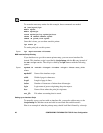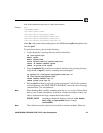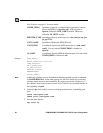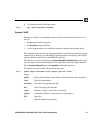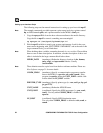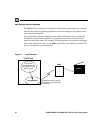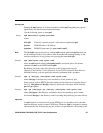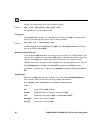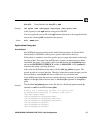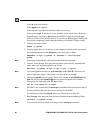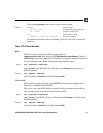
CONFIGURING THE M208 FOR TCP/IP: Host Configuration 55
Starting npd
Starting the npd daemon is all that is needed to utilize npd. Integrating any special
applications can then be done anytime thereafter.
Use the following syntax to start npd:
npd
devicefile ipname portname
where:
devicefile Name for a pseudo-tty pair’s slave device acquired by npd.
ipname M208 IP name or IP address.
portname M208 I/O port name (i.e. prn, com1, com2).
The devicefile cannot exist prior to starting npd and this particular npd daemon can-
not be running already. It is possible to have more than one daemon running on the
same host, however, as long as they are not using the same devicefile.
npd /dev/spike.com2 spike com2
starts an npd daemon utilizing /dev/spike.com2 to send print jobs to the printer
attached to com2 on the M208 named spike.
By default, npd looks in the /dev directory to find a free pseudo-tty pair
(/dev/pty?? and /dev/tty?? files). However, if your UNIX system has these files in a
different directory, you can specify the directory pathname with a -p option.
npd -p /dev/pty /dev/spike.com2 spike com2
where /dev/pty is the directory to be searched for a free pseudo-tty pair.
Some systems such as HPUX place the master and slave devices in separate directo-
ries (e.g. /dev/ptym and /dev/pty). Specify where each of the pairs reside with the -
pm and -ps options.
npd -pm /dev/ptym -ps /dev/pty /dev/spike.com2 spike com2
where /dev/ptym is the directory searched to find a free pseudo-tty pair’s master
device and /dev/pty is the directory used for locating the pseudo-tty pair slave device.
npd locks
As npd acquires an exclusive lock on the M208 port, it is possible to lock out other
daemons that may reside on other UNIX hosts. Therefore, npd is designed to timeout
and release the lock if the pseudo-tty pair is idle for a specified time (30 seconds is the
Syntax
Note
Examp
l
e
Examp
l
e
Examp
l
e




